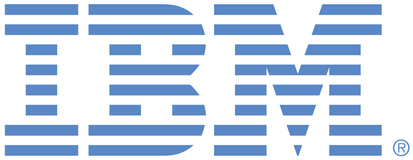
This portal is to open public enhancement requests against the products and services belonging to IBM Sustainability Software. To view all of your ideas submitted to IBM, create and manage groups of Ideas, or create an idea explicitly set to be either visible by all (public) or visible only to you and IBM (private), use the IBM Unified Ideas Portal (https://ideas.ibm.com).
Shape the future of IBM!
We invite you to shape the future of IBM, including product roadmaps, by submitting ideas that matter to you the most. Here's how it works:
Search existing ideas
Start by searching and reviewing ideas and requests to enhance a product or service. Take a look at ideas others have posted, and add a comment, vote, or subscribe to updates on them if they matter to you. If you can't find what you are looking for,
Post your ideas
Post an idea.
Get feedback from the IBM team and other customers to refine your idea.
Follow the idea through the IBM Ideas process.
Specific links you will want to bookmark for future use
Welcome to the IBM Ideas Portal (https://www.ibm.com/ideas) - Use this site to find out additional information and details about the IBM Ideas process and statuses.
IBM Unified Ideas Portal (https://ideas.ibm.com) - Use this site to view all of your ideas, create new ideas for any IBM product, or search for ideas across all of IBM.
ideasibm@us.ibm.com - Use this email to suggest enhancements to the Ideas process or request help from IBM for submitting your Ideas.

Due to processing by IBM, this request was reassigned to have the following updated attributes:
Brand - Internet of Things
Product family - Engineering Lifecycle Management (ELM)
Product - IBM Engineering Test Management (formerly Rational Quality Manager- RQM)
Component - Unassigned
For recording keeping, the previous attributes were:
Brand - Internet of Things
Product family - Engineering Lifecycle Management (ELM)
Product - IBM Engineering Test Management (formerly Rational Quality Manager- RQM)
Component - Other
According to this use case, another approach would be for the tool to support Test Data record selection criteria at the Test Suite level:
See the following existing enhancement request for this approach: https://www.ibm.com/developerworks/rfe/execute?use_case=viewRfe&CR_ID=42668
Also, i would like to add that test data is present on the test case level and not on the test suite level. This makes it further impossible for the user to pick a few test cases from a test suite and execute them for a specific test data values.
Also, i would like to add that test data is present on the test case level and not on the test suite level. This makes it further impossible for the user to pick a few test cases from a test suite and execute them for a specific test data values.
Hello, How do you recommend a user to proceed if a test suite has 10 test cases and 7 test cases need to be tested with some test data and may be 5 test cases need to be tested for other test data values. The test data resides in different csv files.
I am still not clear on the need to duplicate the test cases themselves in the scenario described. I would strongly recommend not to duplicate test cases when duplicating test suites unless the test cases need to be modified for a particular test suite.
Hi,
Yes, user is certainly aware of TCER and TSER artifact types. But in some scenarios, where a tester has to test complex testing scenarios in different situations and not all the test cases should be tested in each case, this requested functionality will come handy. It can be really complicated to have hundreds of test cases in one suite then have different TSER and TCERs for that test suite , especially when you dont want to execute all the test cases in different scenarios. In that case it is better to duplicate the test suite and create TSER/TCER as per the requirement.
This is certainly a valid enhancement request.
However, we recommend users to avoid duplication of test artifacts unless really necessary in order to lower the cost of maintenance of the test plans.
It would be interesting to understand why users think they need to duplicate all the test cases when duplicating a test suite.
Are they aware of execution records (TCER and TSER) and how they related to base artifacts?